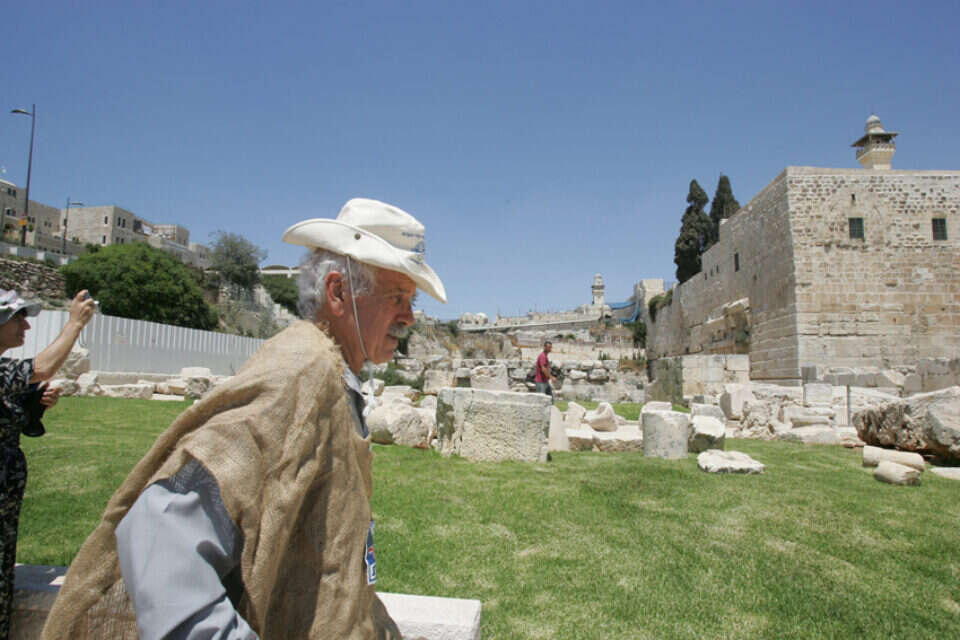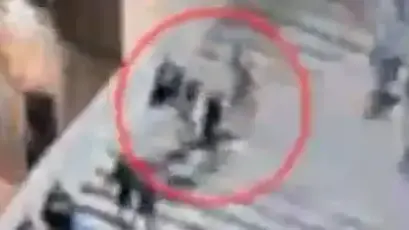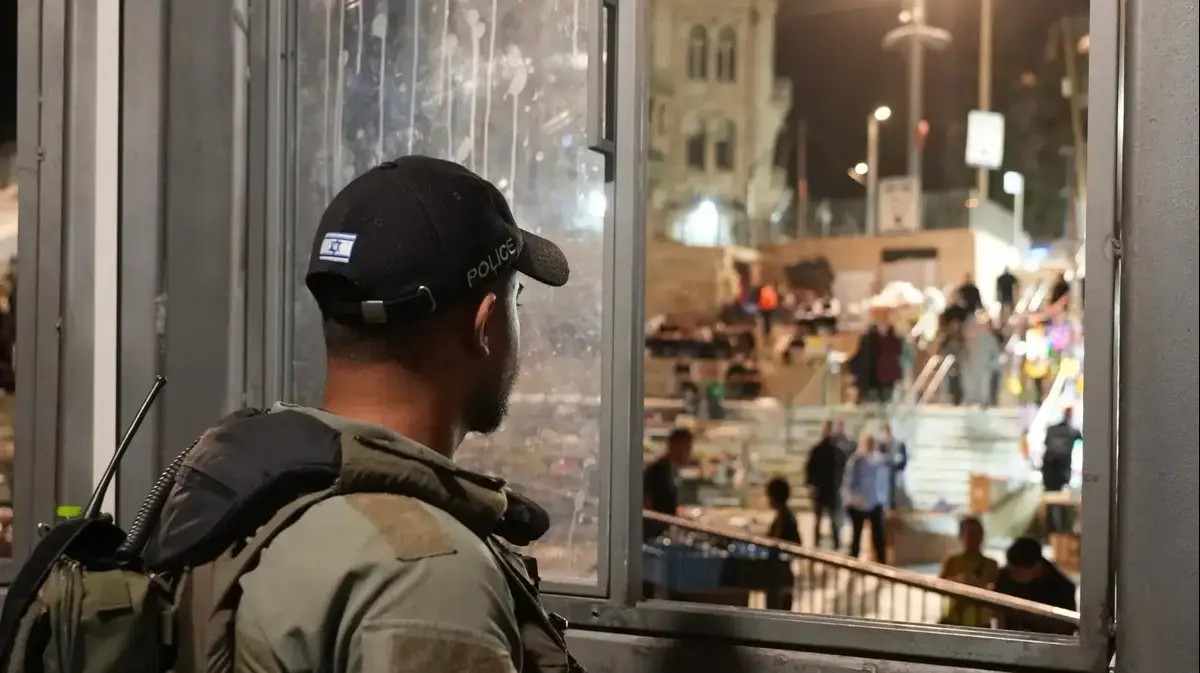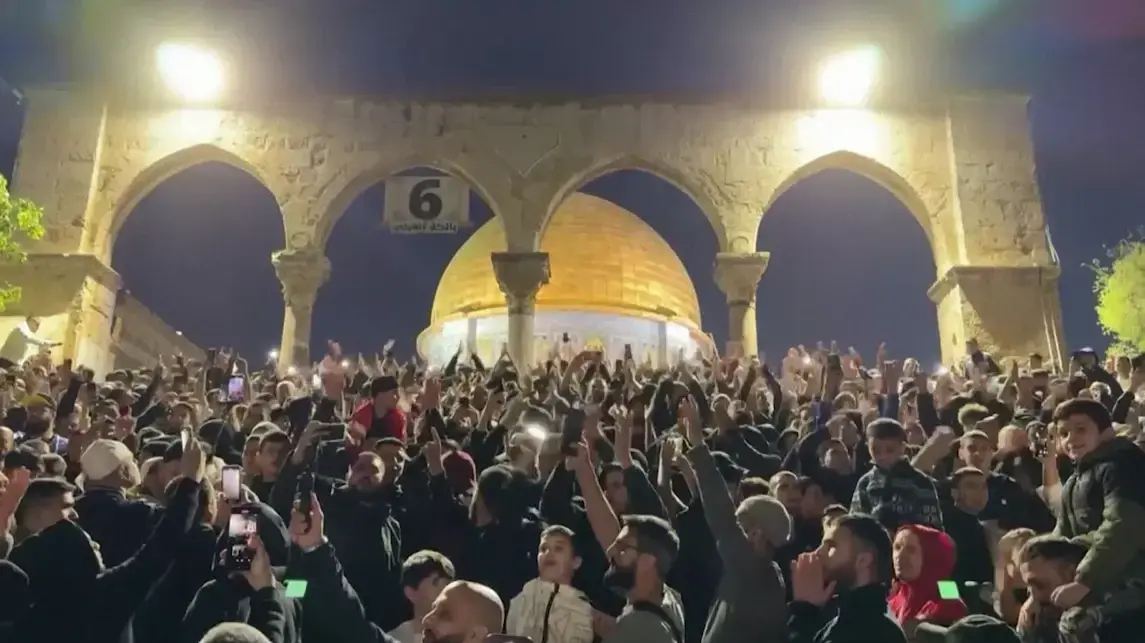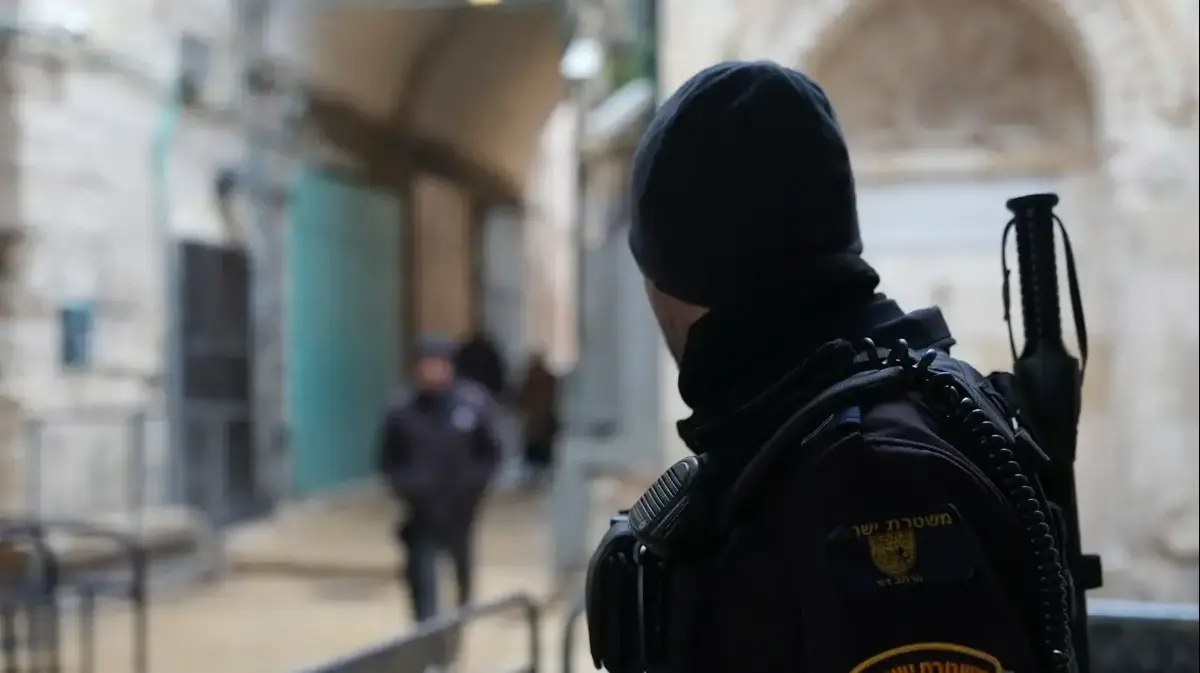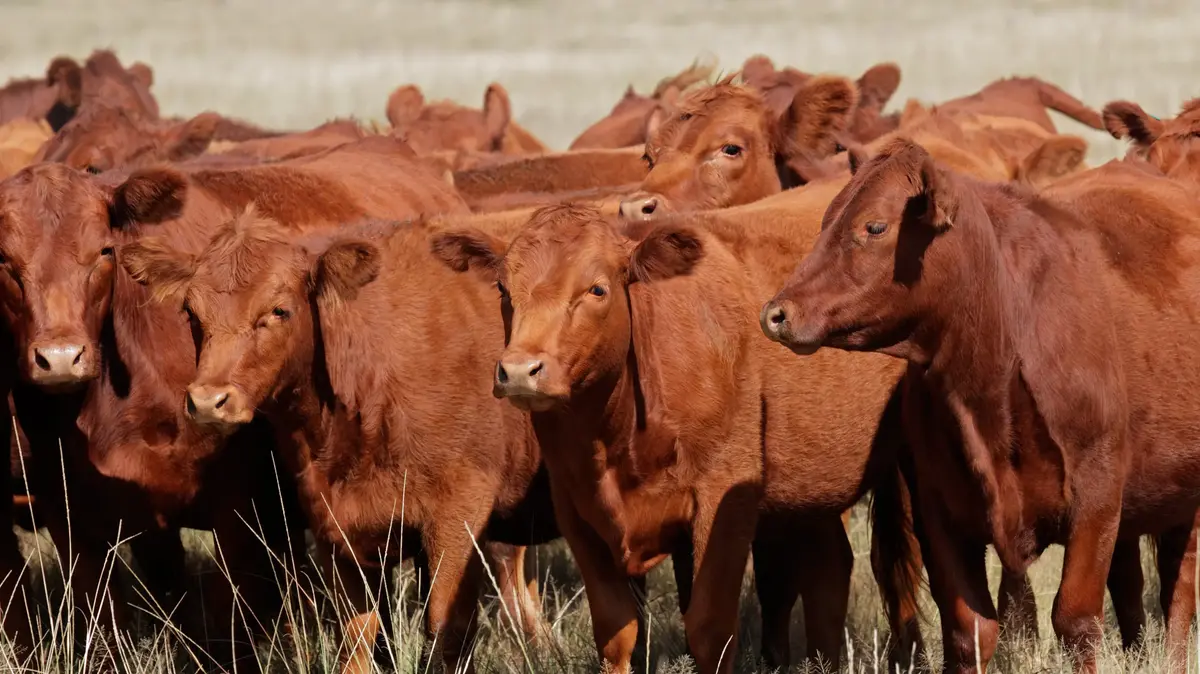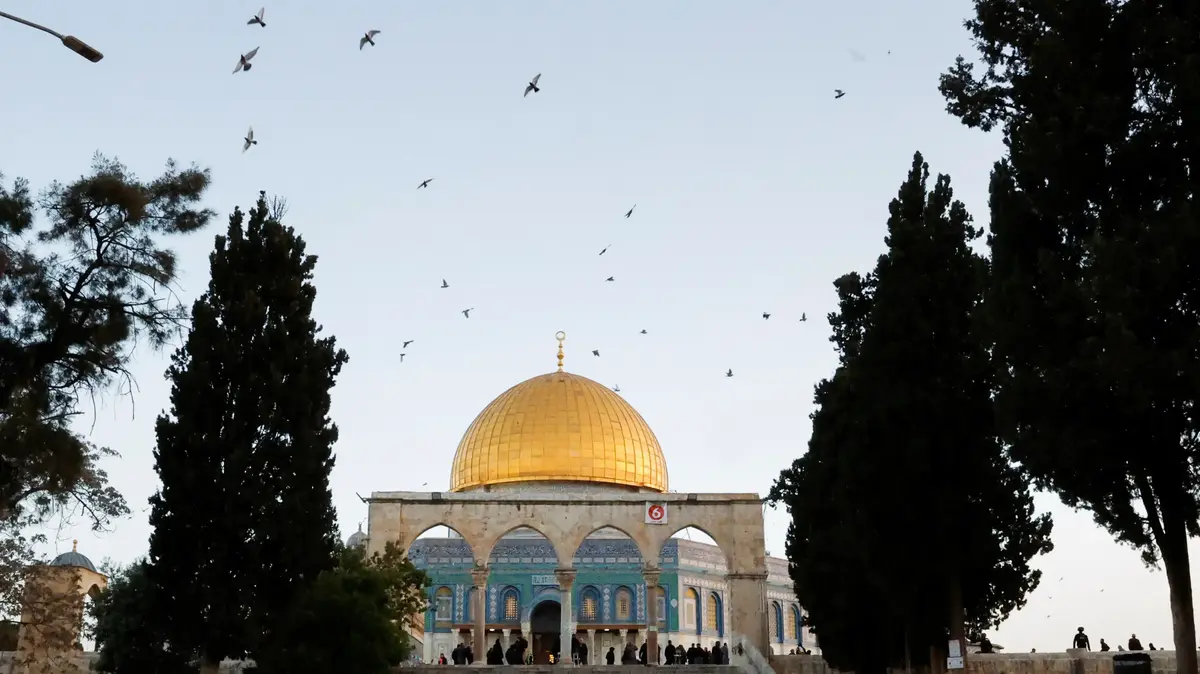Gershon Salomon, who until half a year ago was identified more than any other person with the Jewish struggle on the Temple Mount, passed away last week in the midst of the Jewish revolution there: silent prayers, in the minyan, which take place every day on the eastern side of the mount, with the approval and supervision of the police; Minister designated for internal security (Ben Gabir), who intends to establish and further deepen the change; And more than 50,000 Jewish visitors a year to the holiest place for the Jewish people - a reality that Salomon only dreamed of, watched from afar, but never got to realize.
Salomon embodied in his outlook and personality a complete reversal of the qualities that characterized many of his successors.
He was opposed to temporary or partial achievements in the mountain, to ad hoc agreements with the police or to quiet activity that would bring achievements, without question they would be publicly announced.
Pragmatism and the quiet and informal understandings - which eventually led to the great change in the mountain - were not to his liking.
And despite this, for many years, in the days when only a few on the Jewish side were interested or engaged in the Temple Mount, Solomon was the keeper of the Jewish embers there.
The chairman of the Temple Mount Loyalists movement and a handful of members of his movement would show up at the gates of the Mount almost every week, on weekdays, holidays and holidays, and knock on its doors, which were usually locked in their faces. Time and time again they would turn to the High Court and ask it to exercise the Jewish right to pray there the holiest to the Jewish people.
Time after time the judges returned their faces blankly.
Despite the meager results in those days, Salomon was convinced that without the persistent and almost Sisyphean struggle of himself and his friends, "the Temple Mount will be forgotten and sink into the abyss of femininity."
He was probably right.
The man who made it a point to seek permission from the police for each of his actions, preserved over the years the thin threads that connected the general Jewish public to the Temple Mount, at a time when many were concerned with the glorification of the Western Wall, and only a tiny handful were interested in the Mount.
He was different, as mentioned, from most of the groups and individuals who are currently working to strengthen the Jewish affinity and connection to the mountain.
As a member of the limited management of the Harut movement and as one of the founders of the revival movement, Salomon chose to emphasize the mountain being a national symbol, and not just a religious symbol.
Salomon aspired to the rebuilding of the Temple on the Mount, but chose to paint the Temple Mount as the center of renewed Jewish statehood in the Land of Israel, "the place where the Supreme Court will reside, where the President will be sworn in, where the Knesset will open its meetings once every four years and where the IDF will hold ceremonial parades." .
It is possible that it was precisely his and his friends' distinct national orientation that raised the tension in the Temple Mount area.
It used to be a program for reading a scroll of lamentation in the mountain area;
Sometimes - a plan to offer a Passover sacrifice on the spot, and at other times - plans to establish mezuzahs at the gates of the Temple Mount, a Hanukkah torchlight parade from Modi'in to the gates of the Mount, or a Jewish wedding at the entrance of the Mogravim Gate.
His most famous project - "laying the cornerstone of the Temple" in Sukkot 1991 (8.10.1990) - a symbolic ceremony approved by the police but directed to the ancient Shiloh female, was exploited by the Muslim side to the fullest, for the worse.
At the end of a violent day filled with serious riots, 17 Arabs were killed in the mountain.
It was the most difficult event during the period of Israeli rule on the Mount, which became the object of Israeli and international investigation and inspection committees.
It happened even though the Muslims had no doubt that the "cornerstone" would not reach the holy compound.
The police made this clear to them directly several times.
28 years of removal from the mountain
The story of the cornerstone, however, cost Solomon 28 consecutive years of exile from the Temple Mount.
He became a red sheet in the eyes of the Muslims.
The police, for their part, vetoed his entry to the mountain and painted scary scenarios, not always based, about what would happen if he got there.
Journalist and Temple Mount researcher Arnon Segal, the main operators of the Mount today and in fact one of Salomon's successors, pointed out this week with a large degree of justice that Salomon was "sacrificed by the state to please the angry Waqf, and in fact to cover its lack of power. These were injustices and cruel abuses by the state and its authorities towards A law-abiding man, who over the years made sure to ask for police permission for every demonstration and every step he took, including the 'laying of the cornerstone'."
Only in the twilight of his life, when he was back in a wheelchair, the taboo was broken once and for all.
In the winter of 2019, the outgoing commander of the Jerusalem District, Chief Yoram Halevi, gave Salomon a parting gift and allowed him to go up the mountain, without companions or photographers.
A police officer led Salomon to the steps in front of the Dome of the Rock, and when he left the area of the mountain, he received a hug from the head of the Levi, one of the architects of the great change in the mountain.
Salomon painted the Temple Mount as the center of renewed Jewish statehood: "The place where the Supreme Court will reside, where the President will be sworn in, where the Knesset will open its meetings and where the IDF will hold ceremonial parades."
Salomon, as mentioned, went big, and was not ready to be satisfied with partial and non-public achievements.
"Our struggle is not for some dangerous prayer corner on the mountain, where we stand and pray while the Arabs stand and watch over us," he emphasized, "the struggle is for the return of the Temple Mount to the people of Israel in the full sense of the word, and to remove the Arab Islamic presence from there. The struggle is for the building of the temple."
When I returned this week to the records of the many conversations I had with him over the years, I realized again in what light Solomon saw himself, and how this affected his worldview and conduct.
While the classic religious Zionists defined the State of Israel as "the beginning of our salvation", or "the beginning of the growth of our salvation", Solomon argued that the State of Israel is the salvation itself, "almost the pinnacle of salvation", as he put it.
Salomon attacked the "passive, exilic perception, which arose for the people of Israel in two thousand years of exile".
Herzl, according to his perception, was a modern prophet, and so was Moses, "an assimilator who will be called a banner".
Even Solomon himself, although he did not admit it, felt a little like a prophet.
When rabbis slapped him that he was pushing the end, they would respond that the end had already come and that we should just take the keys and open the gates.
When they asked him: "What is your name? Who specifically appointed you to deal with matters of redemption?", Solomon would reply: "Was there a revelation to Herzl? Did he see a burning bush? And who named Yair and David Raziel?" PS), and who named Matthew the Hasmonean - an almost forgotten Jew from a remote town, Modi'in?
Every Jew should see the burning bush before his eyes."
Salomon, an Easterner by education, seventh generation in Jerusalem, scion of Yoel Moshe Salomon, adopted a quiet tone of voice, with a soft tone, but close to Melitzi.
The smile hardly left his face.
His noble facial features, his thick mustache, his severe limp and the walking stick he used permanently following a serious injury in the battle with the Syrians (at the foot of Tel Azziat in February 1958), made him a unique figure in the human landscape who worked for the Mountain Jew.
Despite his non-threatening appearance, over the years, the Waqf people saw him as the most tangible threat to their hold on the mountain.
He made sure to arrive at the Temple Mount with a long trail of media people trailing behind him, and in practice adopted the rule: you did and you didn't publish - you didn't do.
If he had wanted to, Salomon could have reached an informal arrangement with the Waqf and the police for quiet visits, not accompanied by noise and publicity.
So did other groups.
But for Solomon the demonstration of the Jewish presence on the mountain was secondary.
More important than that was the demonstration of sovereignty.
He insisted on official and public ascents to the mountain with early, extensive media publicity.
From his point of view, there was no point in operating quietly and secretly.
The near certainty formula
His stubbornness led for the first time three High Court judges to an official visit to the Temple Mount. Salomon and his movement petitioned at the end of the 1980s demanding that the state authorities enforce planning, construction and antiquities laws in the areas of the Mount. The array of facts presented by the petitioners before the High Court was quite impressive One that the judges had a hard time ignoring.
The presence of Dan Bhatt, then archaeologist of the Jerusalem district, behind some of the facts detailed in the petition, also helped the "Loyalists of the Mountain".
Menachem Begin praying at the Western Wall after his victory in the 1977 elections, photo: Ya'akov Sa'ar, L.A.M.
On June 16, 1991, the three judges who heard the petition went to the Temple Mount: President Aharon Barak, Vice President Menachem Alon and Judge Gabriel Bach.
For about three hours, the judges toured the place accompanied by the representatives of the state and the petitioners, getting an impression with their own eyes of the reality there.
Solomon himself was not allowed to go up the mountain, for fear that Muslim extremists would try to harm him.
The judges' decision, published three months later, did reject the petition, but there was unprecedented criticism of the legal advisor, the police, the Jerusalem Municipality and the Antiquities Authority for refraining from prosecuting the Waqf for violating the law and for not demanding that the Muslim Authority return the situation on the Mount to its original state.
It was an achievement for Salomon and his movement.
"The petitioners", wrote the judges, "knew how to vote, and we were impressed by this during the tour we held, about many and ongoing offenses allegedly committed by the Muslim Waqf in the Temple Mount area."
However, even that time the political and religious sensitivity of the place prevailed, and the judges contented themselves with a reprimand and a warning note to the law enforcement authorities.
On the other hand, the petitions of Salomon and his friends regarding the possibility of Jewish prayer on the Mount were completely rejected, time after time - a dream that is coming true today not as a result of victories in the legal arena, but as a result of understandings and informal summaries between some of the Temple Mount organizations and the police.
Salomon himself was admitted to the mountain from time to time, but usually the police left him outside the Mughrabi gate, and even for this right he had to fight.
One of Salomon's petitions to the High Court resulted in the near certainty formula, formulated by Aharon Barak. This famous formula was later used by the commanders of the Jerusalem district for generations and other High Court formations.
Barak stated that "if the harm to public security, in the form of harm to the bodies of those gathering and demonstrating, is almost certain, there is a probability of this to justify denying or limiting the freedom of assembly and demonstration. Not so if the harm is at a lower level of probability."
In the event that is the subject of the petition, the judges required the police to allow Salomon and his friends to pray near the Mughrabi Gate, but outside the Temple Mount.
"Is my pledge not enough?"
In the 1980s, Salomon managed to harness Dov Shilansky, who was then the speaker of the Knesset, to the activity regarding the mountain, and before that (along with Dan Meridor) successfully represented as a lawyer a group of Beitarim who tried to pray on the mountain.
The visits of the MKs to the Mount, led by Shilansky, created a huge media response, but also severe riots and great tension. Salomon also made contact with fundamentalist Christian organizations. Some of them financed scans of the underground spaces in the Temple Mount by moving a special camera, similar to an X-ray, on The outer walls of the compound.
Only in the twilight of his life, when he was in a wheelchair, was the taboo broken.
Superintendent Yoram Halevi gave Salomon a parting gift and allowed him to climb the mountain, without companions or photographers.
When he was taken out of the compound, he received a hug from the chief of staff Halevi, one of the architects of the great change in the mountain
He worked as part of the Harut movement, trying to include in the movement's platform an explicit clause, guaranteeing that a government led by Harut would change the status quo and allow Jewish prayer at Mt.
Menachem Begin, later the Prime Minister, objected.
Salomon demanded a vote.
Begin summoned him to him for a private conversation.
Salomon recorded the details of the call.
I published it 27 years ago (in the books "Mountain of Strife", Keter, 1995).
Begin did not bother to deny its content.
Begin: "Like you, I believe that the Temple Mount is the center, the soul of the Jewish people. The heart - moral, spiritual and religious. Like you, I believe that a grave thing was done in the Six Day War: handing over the Jewish heart to the Arabs. Taking down the Israeli flag from the Mount a few hours after its liberation was a humiliating and humiliating act Like you, I believe that the Temple Mount should return to Jewish hands, including Jewish prayer and the Jewish flag. But tell me, Gershon: Do you want the Temple Mount to remain as it is and the formation to remain in power, or for us to come to power and implement our policies on the Temple Mount as well? We must not allow this to the substrate".
Salomon: "Mr. Begin, I would like to know what you will do about the Temple Mount when you become prime minister."
Begin: "If I become prime minister, the Temple Mount will return to being the center of national and religious life. I will place Jewish prayer there. This disgrace will be removed from the people of Israel."
Salomon: "How can I be sure that these things will come true?"
Begin wondered: "Isn't my commitment enough?"
Salomon believed Begin.
He suggested that he go up to the Temple Mount in the near future and publish it, considering it a hint for the future to come.
A few weeks later, when he met Salomon, Begin told him that he had gone up to the Temple Mount together with Haim Landau, but Begin refused to publish this for fear of a riot.
In 1977, when Begin came to power, the promise was not honored.
Begin claimed that those who vetoed the arrangement of Jewish prayer on the mountain were the ultra-Orthodox parties that were members of his coalition - Agudat Israel and Shas. He directed those who attacked him in this matter to the ultra-Orthodox. To the Mount of God": "I will not allow a religious conflict to arise between the Jewish people and the Arab people and the Muslim world." In doing so, Begin also in fact adopted the logic underlying the arrangements that Moshe Dayan established in the Mount. Furthermore: when Dayan joined his government as foreign minister, Begin received one The conditions that Dayan set for him, not to change the status quo on the Temple Mount and not to allow Jewish prayer there.
•••
From the distance of the years Salomon was indeed the "Natori Karta" of the mountain;
The keeper of the Jewish embers there in the first decades after the Six Day War and the one who made sure to keep the mountain in the consciousness of the Jewish public.
On a practical level, he did fail, his movement did not become a mass movement and did not succeed in increasing the Jewish presence on the mountain.
But it is doubtful if without his activity and the seeds he planted, the movements that continued his path would have succeeded in bringing about the change that is taking place in the mountain these days.
were we wrong
We will fix it!
If you found an error in the article, we would appreciate it if you shared it with us

